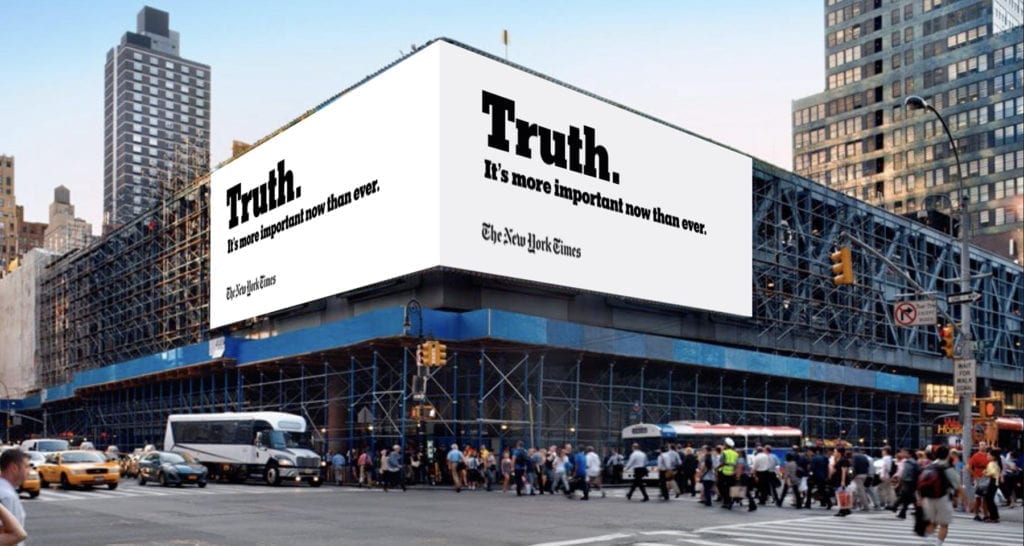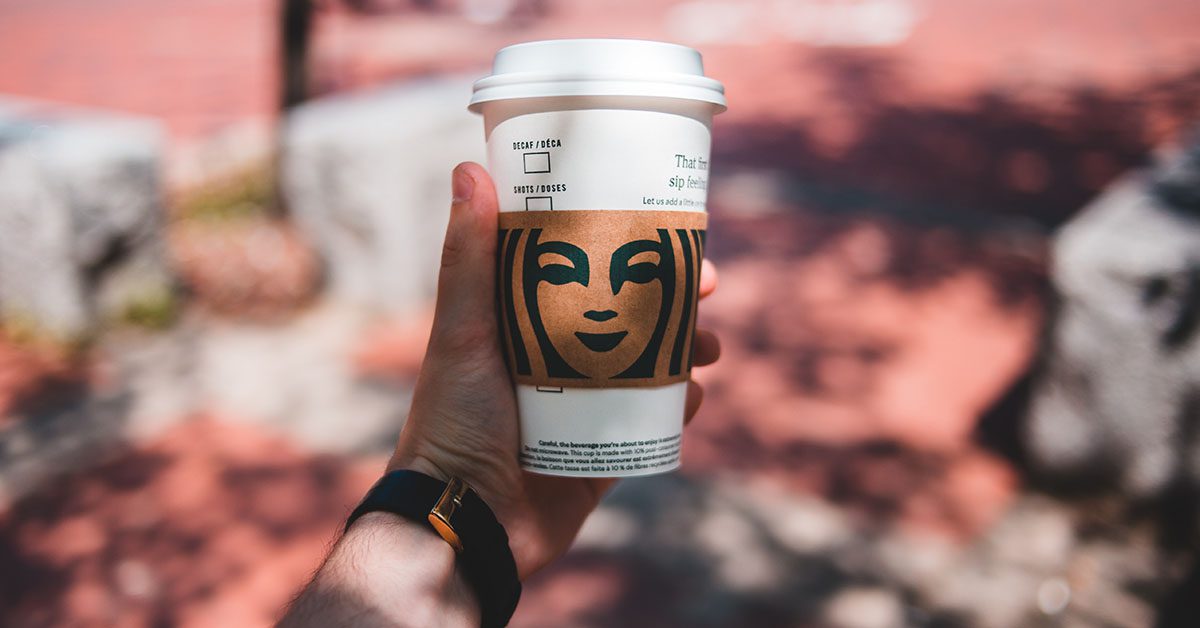Digital ads are a powerful, modern tool. They offer greater personalization than do radio, TV or print ads, and they allow you to reach potential customers in a cost-effective manner.
But as time wears on, consumers are becoming resistant to advertisements in all forms — and unlike with the golden age of advertising, which took place mainly on TV and in print, you don’t necessarily have a captive audience.
Indeed, you’re competing for consumer attention more than ever. Today, it’s common for the average consumer to watch a show on their TV while checking their smartphone and issuing verbal commands to their virtual assistant. Without a doubt, life progresses today at a dizzying pace.
How, then, can you stand out?
One way is to craft humanized advertising campaigns. Even better, humanized campaigns can help you optimize return-on-investment due to their tendency to gain traction on social media.
But be warned: as we’ll see, these campaigns require authenticity. Consumers can detect posers a long way off. In this post, we’ll explore several stellar examples of humanized campaigns, and we’ll provide you with three ways to get started today.
Consumers Are Social By Nature
We’re all sometimes guilty of thinking of consumers as discrete units of profit-generating potential. After all, without their patronage, our digital advertising efforts are for naught. However, it’s important to remember that consumers are living, breathing people and that they have healthy social lives.
Nowhere is this more evident than in the explosion of social media platforms, which began with Myspace, and that continued through services such as Facebook, Snapchat, and Instagram.
The Power of Instagram

Instagram, in particular, allows us an opportunity to engage with consumers where they feel most relaxed and at ease. Indeed, the platform is a favorite of savvy businesses as it enables them to show a more human side through posts that highlight the talents and everyday activities of their employees. Consequently, the platform is well-suited to the sort of humanized ads we’ll be discussing in this post.
For now, to see a few of these company profiles in action, check out the following business Instagram accounts:
In particular, the Instagram Stories feature is a powerful and provocative way to give fans a glimpse into your inner workings — or those of your clients, if you’re an ad agency. The allure of Instagram Stories is that they vanish after 24 hours. As such, these posts have urgency baked right in. If this sounds familiar, it should. It’s duplicating the functionality of Snapchat.
Instagram Stories are among the most popular content on the site — by far. What’s more, you can reach consumers with ads when they’re particularly engaged. If an Instagram Story, with its baked-in urgency and ephemeral nature, receives social buzz or acclaim, your ads will benefit from the hype by way of a warmer reception.
What’s great about Stories is that consumers don’t expect them to be very polished. The posts don’t last long, after all. Stories provide a fantastic opportunity for a company to show its softer, squishier, more organic side.
The Power of Format Diversity
People have traditionally consumed advertisements through physical media, such as newspapers, magazines, and trade journals. But well before Google pioneered the idea of ‘relevant ads’ with their AdSense program, the ads in the back of, say, a Popular Mechanics magazine were likely to be for clever gadgets. Naturally, this relevancy increased the likelihood of engagement and lead to higher sales for the manufacturers.
But digital and in-person ads don’t have to be at odds, and combining them provides a powerful way to humanize campaigns.
For an example of this, you need to look no further than The New York Times.

Following the 2016 U.S. presidential campaign, certain elements of society were disillusioned with the ‘mainstream media.’ Fearing this attitude could take root and flourish, The New York Times sought the aid of ad agency Droga5.
The resulting The Truth Is… the campaign effectively combined traditional print and TV ads with digital ads. The ads were a poignant reminder that on a practical level, ‘the truth’ is often not an objective fact, but that rather, ‘the truth’ can be what is most convenient for those in power at the moment. The ads, which contained conflicting messages meant to illustrate the importance of more objective journalism, used several succinct slogans to drive the point home:
- The truth is hard
- The truth is hard to find
- The truth is hard to know
- The truth is more important now than ever
In short, the campaign humanized the organization, and it reminded consumers of the organization’s importance to our society.
The TV spots ran first and were followed by digital ads that continued for a month. In the following months, Drogo5 partnered with director Darren Aronofsky, director of Black Swan and Requiem For A Dream, to produce a series of short films that further drove the point home.
The New York Times Company brought in $1.6-billion in 2017.
Other Examples of Humanized Campaigns
Zappos

Amazon-owned Zappos is another example of a company humanizing their digital ads. The massive online shoe retailer consistently runs winning campaigns that showcase its renowned customer service and consumer-friendly policies. These ads focus on what their customers want and need, instead of what the company wishes they wanted.
What do their customers want? For one, their customers have come to expect a stress-free return process and inexpensive shipping. Their ads focus on that. Their customers expect Zappos to live up to their reputation of being among the best in the customer service game. Here again, the ads reinforce this expectation as not only reasonable but as the consumer’s right.
Put another way, Zappos is acknowledging their consumers as individuals with their own wants and needs and is demonstrating that they’re willing and happy to meet those expectations.
One of the main aims of the company is to build a real relationship with their customers. To that end, they encourage team members to create short video essays. These videos, posted to Facebook, further humanize the company. In one of them, created by Zappos Art Director Brad Swonetz, Swonetz discusses his passion for photography. But a more subtle purpose of the video is to give Swonetz an opportunity to discuss his passion for his job at Zappos.
All of these campaigns leverage the social nature of consumers.
- If we see that a company is full of happy employees and that those employees pride themselves on their ability to provide stellar service to customers, then that company and its products must be pretty okay, right?
- If we see that the New York Times is willing to cast a wide net to catch consumers where they are, instead of relying on their own platform, then they must still be relevant, right?
- If we see employees goofing off on Instagram, that implies that the company doesn’t take itself too seriously and that they’re carefree, fun, and energetic. Consumers, especially Millennials, would rather give their money to companies they resonate with.
In other words, these humanized campaigns work on a subconscious level.
American Express
This sort of advertising need not be limited to digital ads, either, strictly speaking. You can build a platform, and, once populated by engaged users, you can feed ads to those users. For instance, American Express Business Trends and Insights is a robust platform that allows industry experts to share insights with one another.
As the owner of the platform, American Express can, at any time, inject their own ads into the process. There are three things worth noting about this tactic:
- There is no, or very little, content cost since all content is provided for free by consumers themselves
- American Express is engaged in the brand building since its customers use the platform
- For an established company, the initial outlay of such a platform is relatively small
What’s more, consumers are likely to be warm to the ads displayed on the platform because said ads will be — or should be — highly relevant to business owners and entrepreneurs.
Mint
Mint, a budget software solution, undertook a similar strategy when they sought to differentiate themselves from other solutions such as Quicken. Instead of just dumping money into digital ad campaigns, they turned to content marketing to become an authority in their space. This approach resulted in brand ambassadors championing their product, which bolstered their digital advertising efforts.
In 2009, Mint.com sold to Intuit for $170-million.
How to Create Humanized Campaigns
Creating more humanized campaigns requires you to take a step back from pure demographic data and to examine the deeper underlying issues that consumers face. Creating these campaigns requires looking deeper at what makes consumers respond.
The more cynical among us might surmise that this comes down to simple emotional manipulation. To be fair, if done simplistically, it can be just that. But a more in-depth examination reveals that the issues these campaigns focus on tend to be social in nature. They tend to hearken back to issues that we all, on one level or another, care about. In other words, they’re universal in scope.
Let’s look at a few examples from history.
Dove (Unilever)

The first is from beauty care product manufacturer Dove, with its Real Beauty campaign. What universal emotions does this campaign conjure? We could say that the campaign evokes the following emotions, sensations, or states of being:
- Warmth
- Happiness
- Self-Confidence
- Self-Knowledge
The campaign was successful at connecting Dove with consumers because it spoke to them in a fundamental language: the language of need fulfillment. Dove doesn’t sell essential survival gear, so they must grab their customer’s attention and appeal to their need for the finer things in life. For more on this, see Maslow’s Hierarchy of Needs.
Coca-Cola

Another master of humanized advertising is Coca-Cola. Their numerous ad campaigns over the years demonstrate this, but let’s take one in particular: the Happiness Factory campaign. This campaign, with its associated assets, conjures feelings and memories of:
- Fun
- Nostalgia
- Spending time with Friends
- Childhood
There are several other examples from marketing history that are well worth your study:
- Mm’ Mm’ Good, Campbell’s Soup
- eHarmony, with its ‘Helped millions of couples fall in love’ tagline
- Energizer, with its immortal bunny that plays on the universal desire to live — and play — forever
- Allstate, with their Mother’s Day campaign
- Volkswagen, with their Think Small campaign
- The U.S. Navy, with their YouTube campaign
In all of these various campaigns, we see a for-profit organization — or a branch of the military in need of recruits, as the case may be — taking pains to see consumers as more than the source of profits. Instead, these campaigns are rooted in fundamental aspects and truths of human experience. This, as you might expect, increases consumer responsiveness.
As corporate entities, business owners, and entrepreneurs, we should take care to view marketing as an opportunity to build relationships. That’s all well and good, some might say, But how does that translate into higher ROI?
The reality is that humanized advertising can be a powerful ally in the struggle to build a robust and enduring brand. A strong brand, in turn, can lead to higher ROI in digital advertising due to brand recognition. In addition, a strong brand can lead to repeat business due to customer loyalty.
How It’s Done
But translating this concept of humanized ads to digital ad space can be tricky.
This is further hindered by the fact that the average consumer is exposed to dozens or even hundreds of advertising messages each day. Ad blindness is, after all, a serious concern. On the other hand, this is precisely why humanized campaigns can be so powerful. Campaigns like those above subvert expectations, which in turn causes the consumer to pause and take notice.
Let’s look at a few ways you can get started:
#1 – Take Action
One approach is to reach out to consumers for feedback, and then to — gasp — take action on that feedback. A strong example is Domino’s 2010 digital and TV ad campaign that said, Hey, we know that our pizza isn’t great. We’ve heard you, and we’re working on it.
This campaign was a roaring success, and it revitalized the business.
#2 – Stand for Something
Another related approach is to show consumers that you can be both authentic and genuine, by championing a cause. But that’s just the problem, isn’t it? Like the kid at the school dance, if you have to show people that you’re cool, you’re not really cool, are you? For this reason, it’s crucial that the cause, your brand, and your product all align.
Yet, this is precisely why these campaigns can bring in so much revenue when pulled off. For an example of this type of campaign done right, see the #LikeAGirl, Champion Girl’s Confidence Campaign from Always.

The campaign drew on research showing that most girls suffer from lower self-esteem early on in puberty. The campaign demonstrated to concerned parents that Always get it, and more than that, that they’re an organization made up of…concerned parents.
The underlying message of the campaign to parents was, Hey, we’re all in this together.
It’s worth noting that building these relationships in the digital age is extremely worthwhile. Doubtless, Always earned itself more than a few brand ambassadors through this campaign.
#3 – Go With Personality
If you don’t have a cause to champion, you can create humanized ads through sheer force of personality. As mentioned, consumers like giving their money to companies they resonate with. It’s easier to sympathize with an entity that has personality than with a corporation that only cares about making money.
Spotify is a master of this type of marketing. The free tier of their service is littered with ads for the Premium membership, and these ads work hard to establish a connection with the target audience — through personality. More airtime is spent delivering a, Hey, I’m quirky and bubbly, just like you! message than on conveying the perks of premium membership.
Another example of personality marketing is the Do The Hustle Campaign from Wistia. Like their other humanized campaigns, such as 2013 Wrap it Up With a Rap video and blog post, these videos show the staff at work and play. The personality shines through, and consumers take notice. Of course, it’s easy to descend into cheese territory, but these campaigns can be effective precisely because they break the mold. The levity is unexpected.
Note, however, as you consider these strategies, that digital ad space is well suited to short, punchy, emotional messages. To see this done right, take a look at the U.S. Navy’s recent YouTube campaign. These short — around 25 seconds or less — video ads tug at the heartstrings and stir notions of patriotism in their target audience.

